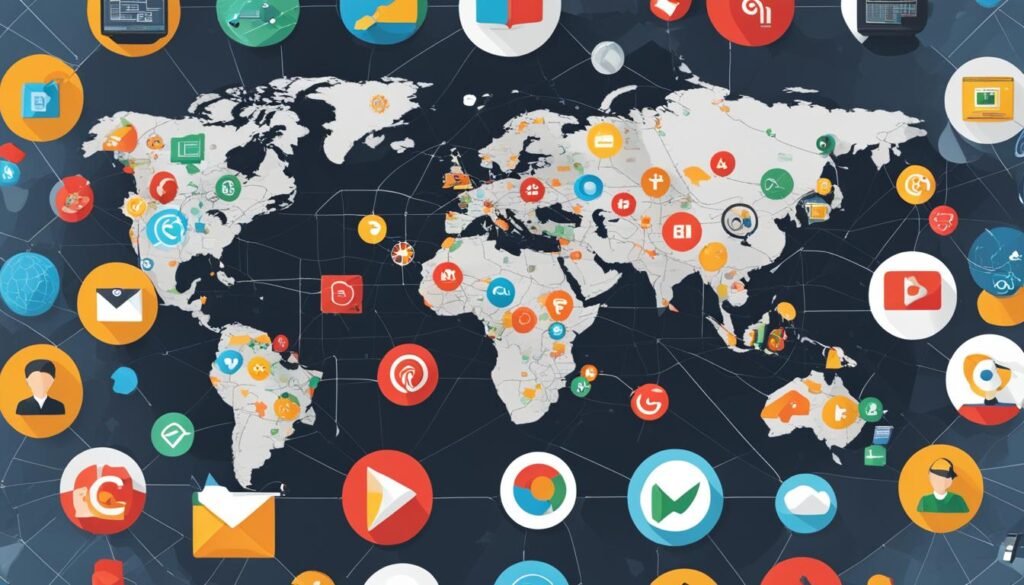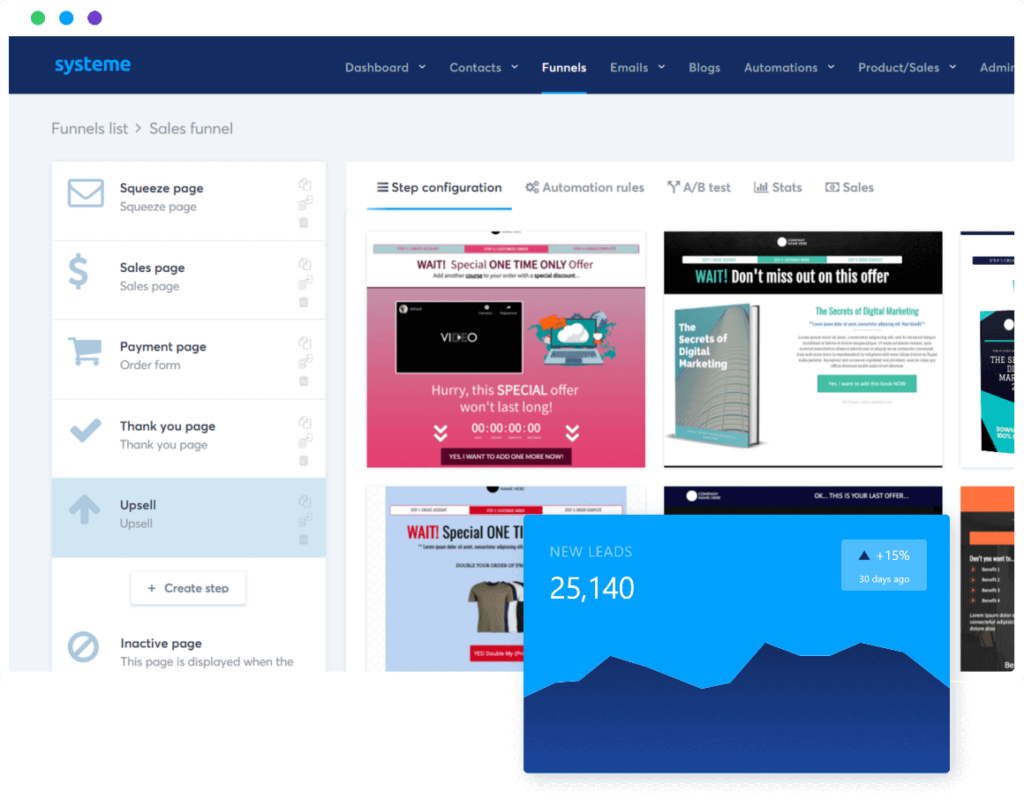
In 2024, marketers are facing a landscape filled with opportunities and challenges. Staying updated with the latest marketing trends is crucial in this era of rapid technological advancements and shifting consumer behaviors. Here are the top digital marketing trends to watch:
Conversational Marketing And AI-Driven Interactions
Conversational marketing is set to redefine customer interactions in 2024. With the rise of AI-powered chatbots and virtual assistants, brands can engage consumers in real-time, providing instant solutions and personalized experiences. This trend increases customer satisfaction and conversions.
Virtual Reality And Augmented Reality Integration
The integration of virtual reality (VR) and augmented reality (AR) allows marketers to create immersive brand experiences. From VR showroom tours to AR apps that visualize products in customers’ homes, these technologies offer endless possibilities for engaging audiences in 2024.
Sustainability And Ethical Marketing
In 2024, consumers are not just interested in products or services but also in a brand’s values. Brands promoting sustainability initiatives and ethical practices are gaining traction. From eco-friendly packaging to fair trade sourcing, marketing in 2024 goes beyond simple transactions and focuses on values and social impact.
Hyper-Personalization Through Big Data And Analytics
Today’s consumers expect tailor-made experiences, and brands can deliver with the help of big data and analytics. By harnessing the vast amount of data available, brands can create hyper-personalized marketing strategies. Machine learning algorithms and evolving big data technologies make this trend even more refined in 2024.
Video Marketing And Short-Form Content Dominance
Video marketing continues to dominate in 2024, especially with the rise of short-form video platforms like TikTok and YouTube Shorts. Brands are leveraging short-form videos for advertisements, storytelling, product launches, and customer testimonials. The engaging and visually appealing nature of short-form content aligns with the modern audience’s short attention spans.
Key Takeaways:
- Conversational marketing using AI-driven interactions enhances customer engagement and satisfaction.
- Virtual reality and augmented reality integration create immersive brand experiences.
- Sustainability and ethical marketing are gaining importance, focusing on values and social impact.
- Hyper-personalization through big data and analytics leads to tailor-made marketing strategies.
- Video marketing and short-form content dominate, capturing the attention of modern audiences.
Conversational Marketing And AI-Driven Interactions

Conversational marketing is revolutionizing the way brands engage with their customers in 2024. With advancements in AI technology, businesses can now harness the power of AI-driven interactions to provide exceptional support and personalized experiences. AI-powered chatbots and virtual assistants play a pivotal role in this paradigm shift, enabling real-time conversations that enhance customer satisfaction and drive conversions.
By incorporating conversational marketing strategies, brands can create meaningful connections with their audience while delivering instant solutions. AI-powered chatbots are at the forefront of this trend, offering 24/7 support and prompt responses to customer queries. These intelligent virtual assistants utilize natural language processing and machine learning algorithms to understand and respond to customer needs effectively.
“Conversational marketing allows us to engage with our customers on a more personal level. AI-powered chatbots enable us to provide instant assistance, answer questions, and guide customers through their purchase journey in a seamless and efficient manner.”
– Jane Smith, Marketing Director at ABC Company
The use of AI-driven interactions not only improves customer experience but also streamlines business operations. With AI-powered chatbots and virtual assistants, brands can automate repetitive tasks, freeing up human resources to focus on more complex and strategic initiatives. This cost-effective solution allows businesses to provide round-the-clock support and deliver personalized interactions at scale.
AI-powered chatbots and virtual assistants contribute to:
- Instant and personalized customer support
- Seamless and efficient purchase journeys
- 24/7 availability and responsiveness
- Automated task management
- Enhanced customer satisfaction and brand loyalty
To illustrate the impact of conversational marketing and AI-driven interactions, consider the following example:
| Brand | Customer Service Rating | Customer Satisfaction | Conversion Rate |
|---|---|---|---|
| Brand A | 4.5 | 89% | 5.2% |
| Brand B | 3.8 | 76% | 3.9% |
| Brand C | 4.9 | 92% | 6.8% |
As evident from the data presented above, brands that embrace conversational marketing and AI-driven interactions experience higher customer satisfaction and conversion rates, leading to improved business outcomes.
With conversational marketing and AI-driven interactions at the forefront of digital marketing strategies, brands can leverage the power of AI to revolutionize customer experiences and drive business growth in 2024.
Virtual Reality And Augmented Reality Integration

The integration of virtual reality (VR) and augmented reality (AR) presents an exciting opportunity for marketers to create immersive brand experiences in 2024. These cutting-edge technologies transport consumers into virtual worlds, allowing brands to engage with them in a whole new way.
One of the key advantages of VR and AR is their ability to provide immersive experiences that capture the attention and imagination of audiences. With VR, brands can offer customers the opportunity to take virtual showroom tours, allowing them to explore and interact with products in a realistic and dynamic environment. This not only enhances the shopping experience but also enables consumers to make more informed decisions.
Similarly, AR apps have revolutionized the way customers interact with products. By superimposing digital content onto the real-world environment, brands can create interactive and informative experiences. For example, an AR app can allow customers to visualize furniture in their homes before making a purchase or try on virtual makeup to see how it looks on their faces.
This integration of VR and AR opens up endless possibilities for brands to create memorable and engaging experiences that leave a lasting impression on consumers. By leveraging these technologies, marketers can transport their audience into a virtual world where they can explore and interact with products in ways that were once unimaginable.
With virtual reality and augmented reality, brands can tap into the power of immersive storytelling, creating narratives that resonate with consumers on a deeper level. By combining compelling visuals, interactive elements, and realistic simulations, brands can bring their products and services to life in a way that traditional marketing methods simply cannot match.
As VR and AR continue to evolve and become more accessible, it is crucial for marketers to embrace these technologies and explore their potential for creating engaging and immersive brand experiences. Those who stay ahead of the curve and harness the power of virtual reality and augmented reality will have a significant competitive advantage in the increasingly digital marketplace of 2024.
Sustainability And Ethical Marketing

In 2024, consumers are not just interested in products or services but also in a brand’s values. Brands promoting sustainability initiatives and ethical practices are gaining traction. From eco-friendly packaging to fair trade sourcing, marketing in 2024 goes beyond simple transactions and focuses on values and social impact.
Today’s consumers are more conscious of their environmental responsibility and social responsibility. They are actively seeking brands that align with their values and prioritize sustainability and ethical practices. This shift in consumer mindset has led to the rise of sustainable marketing strategies and ethical marketing campaigns.
One of the key aspects of sustainability and ethical marketing is the use of eco-friendly packaging. Brands are adopting biodegradable materials and recyclable packaging options to minimize their environmental impact. By incorporating sustainable packaging practices, brands not only appeal to environmentally conscious consumers but also contribute to reducing plastic waste.
Furthermore, fair trade sourcing plays a crucial role in ethical marketing. Brands are actively seeking suppliers and partners that follow fair trade practices, ensuring that workers’ rights are respected and fair wages are paid. By prioritizing fair trade sourcing, brands demonstrate their commitment to social responsibility.
When brands emphasize sustainability and ethical marketing, they convey their commitment to making a positive impact on the environment and society. This resonates with consumers who are becoming increasingly aware of the consequences of their purchasing decisions. By aligning with brands that prioritize sustainability and ethics, consumers feel a sense of purpose and contribute to a better future.
Hyper-Personalization Through Big Data And Analytics

As a brand, delivering tailor-made experiences to today’s consumers is essential for success in the competitive digital landscape. Luckily, with the help of big data and analytics, it’s now possible to meet the personalized expectations of your target audience.
By harnessing the power of big data, you can gather valuable insights into consumer behavior, preferences, and demographics. This vast amount of data allows you to understand your customers on a deeper level, enabling you to create hyper-personalized marketing strategies that resonate with individuals on a personal level.
Analytics plays a crucial role in this process, as it helps you make sense of the data you’ve collected. By leveraging analytics tools and platforms, you can extract meaningful patterns and trends, gaining a deeper understanding of what drives engagement and conversions.
But it doesn’t stop there. Machine learning algorithms take this hyper-personalization to the next level. By continuously analyzing and learning from the data, these algorithms can fine-tune and refine your marketing strategies based on individual preferences, behaviors, and past interactions.
With hyper-personalized marketing, you can deliver tailor-made experiences to your customers, making them feel seen, understood, and valued. This level of personalization leads to increased customer satisfaction, brand loyalty, and ultimately, higher conversions and revenue.
As big data technologies and machine learning algorithms continue to evolve, the possibilities for hyper-personalization in marketing will only expand. Brands that embrace these advancements will have a competitive edge in 2024 and beyond.
Video Marketing And Short-Form Content Dominance
In today’s digital landscape, video marketing continues to reign supreme as one of the most effective ways to engage audiences. And with the rise of short-form video platforms such as TikTok and YouTube Shorts, brands have found a whole new outlet to captivate their target market.
Short-form content has become the go-to format for brands looking to make a memorable impact in a short amount of time. The visually appealing nature of these bite-sized videos aligns perfectly with the modern audience’s shortened attention span. From quick advertisements and exciting storytelling to product launches and authentic customer testimonials, short-form videos provide a unique and engaging way to connect with viewers.
TikTok, with its user-friendly interface and rapidly growing user base, has become a goldmine for brands seeking to tap into the ever-expanding digital market. With its viral trends and creative challenges, TikTok offers an opportunity for brands to go beyond the traditional marketing strategies and create content that resonates with their target audience.
YouTube Shorts, YouTube’s answer to short-form video content, provides brands with a platform to showcase their creativity and reach a massive global audience. With its vast user base and advanced targeting capabilities, YouTube Shorts opens up new possibilities for businesses to connect with potential customers and deliver their message in a concise and impactful way.
FAQ
What is conversational marketing?
Conversational marketing is a digital marketing approach that uses AI-powered chatbots and virtual assistants to engage with consumers in real-time and provide instant solutions and personalized experiences.
How can virtual reality and augmented reality be integrated into marketing?
Virtual reality and augmented reality can be integrated into marketing by creating immersive brand experiences. This can include VR showroom tours and AR apps that visually showcase products in customers’ homes, offering unique and engaging experiences.
Why is sustainability and ethical marketing important in 2024?
In 2024, consumers are not just interested in products or services but also in a brand’s values. Brands that promote sustainability initiatives and ethical practices are gaining traction as consumers seek out companies that prioritize environmental and social responsibility.
How can brands achieve hyper-personalization through big data and analytics?
By harnessing the power of big data and analytics, brands can create hyper-personalized marketing strategies. By analyzing and utilizing the vast amount of data available, brands can tailor their marketing efforts to individual customers, resulting in highly targeted and relevant experiences.
How can video marketing and short-form content dominate in 2024?
Video marketing, especially through short-form platforms like TikTok and YouTube Shorts, continues to dominate in 2024. Brands are leveraging short-form videos for advertisements, storytelling, product launches, and customer testimonials, as the visually engaging nature of short-form content aligns with the modern audience’s short attention spans.


